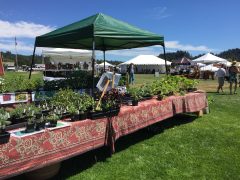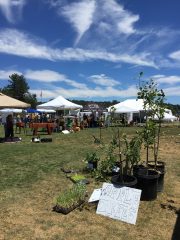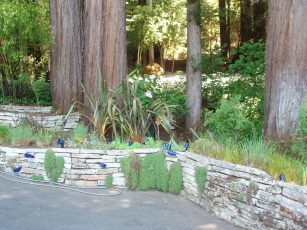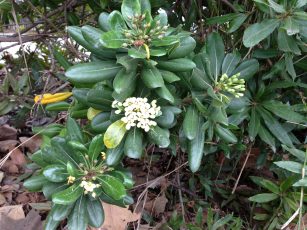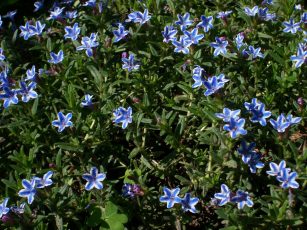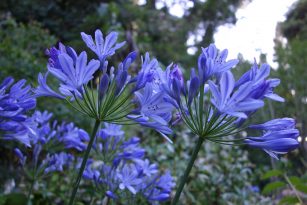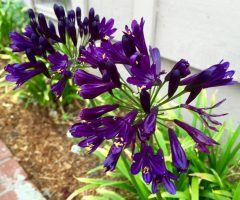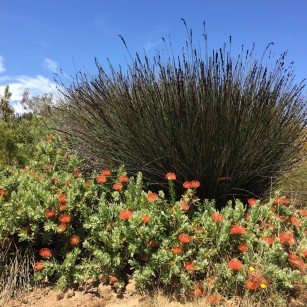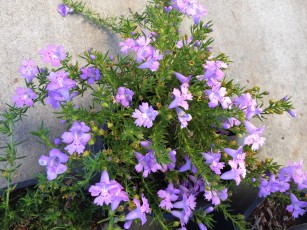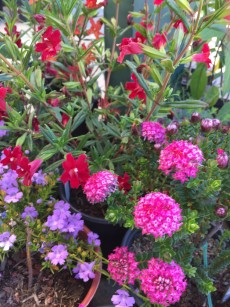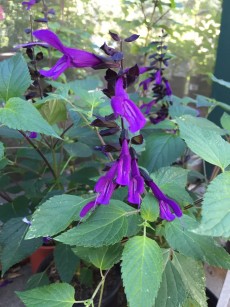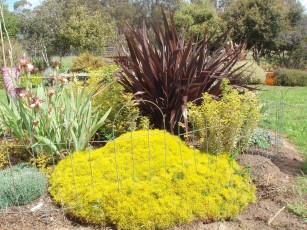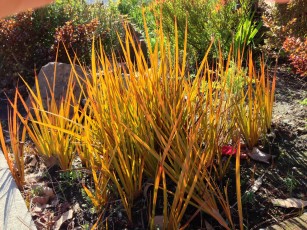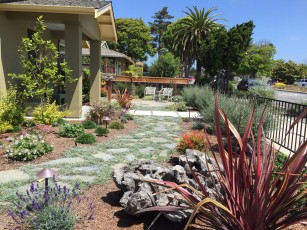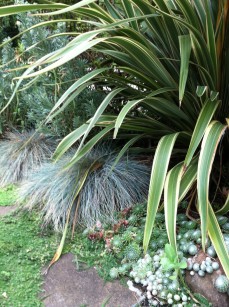Replacing that water guzzling lawn or dramatically reducing the size is a good place to start conserving water and is easier than you think. If you?ve been paralyzed with the thought of digging out and hauling away hundreds of square feet of heavy sod or using dangerous grass-killing chemicals, sheet mulching is the method for you.
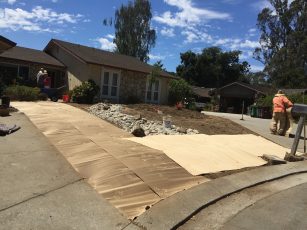
This simple technique eliminates the lawn by smothering it with layers of compost and renewable materials. Here?s how to do it:
- Mow the lawn down to 1-2?, leave the clippings in place and soak with a hose.
- Flag the locations of sprinkler heads you will be keeping for your new plantings and cap off the ones you won?t need.
- Add an inch of compost to speed up the decay of the grass. If your lawn borders a driveway, path or sidewalk you?ll have to remove about 3? inches deep of soil along these edges and back 8-12? so that the new mulch doesn?t slide off into the sidewalk.
- Put down 2-3 layers of newspaper or one layer of cardboard overlapping the edges by 6-8? to prevent regrowth at the edges. You can buy recycled cardboard in rolls for larger projects or find your own at appliance or bicycle stores. Wet the cardboard or newspapers to keep them in place as you go along. It?s best to use cardboard or newspaper thatwill break down quicker. Don?t use plastic sheeting because water and air cannot penetrate it.
- Add a 3? layer of mulch such as bark chips from a tree trimming company. You can use compost, straw or shredded plant material. If you have Bermuda grass or other weeds like oxalis you will need to layer about 8? of mulch to smother them.
- Water thoroughly.
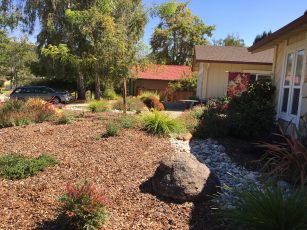
If you can wait a month or more to let the decomposition process get going so much the better. If you just can?t wait you can begin planting now by scraping away the mulch and poking a hole in the cardboard or newspaper where the plant is to go. Then add some compost to help the new plant become established. Be sure to plant high enough to prevent crown rot and keep the mulch a couple inches away from the stem. The top of the root ball should be 1-2? above the soil and just below the mulch.
Modify the sprinkler to drip and remember to adjust your irrigation system run times to accommodate your new plantings.
This is a basic ?lasagna? method for lawn removal. If you are planning to replant with water smart grasses you would choose finer composted mulch instead of bark chips. Either way the process works on the same concept as a compost pile. As the lawn dies from lack of light, it decomposes with the activity of beneficial worms, insects and microorganisms coming up from the soil and doing their job to break down the nitrogen and carbon in the sheet-mulch layers. It?s a win-win situation for the environment and your water bill.
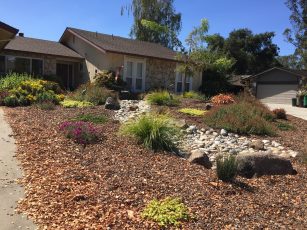
Water conservation starts with losing or reducing the thirsty traditional lawn and reducing irrigation. Transform your landscape into a resilient garden that not only saves water but acts to build the earth into a living sponge that harnesses rainwater and replenishes the aquifer at the same time. Attracting wildlife to your new beautiful garden is a bonus.
Be sure to apply for your rebates and have your lawn inspected, even if it?s dead, before you start.

